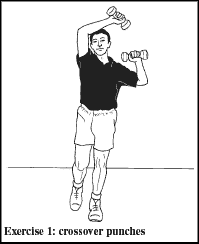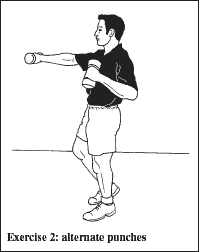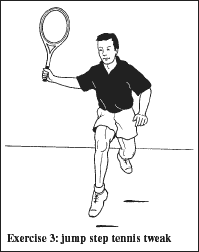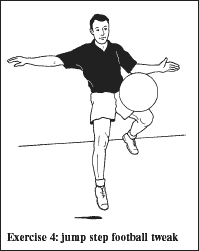Balance exercises for football and tennis
In the eyes of many athletes seven training days a week are just not enough. We are told we must train on the pitch 3 times a week, strength train twice a week, have rest days but train flexibility, technical skills, psychological skills etc etc the list is endless. What most people forget to mention is we may need balance training too!. Indeed, many athletes today are using balance training as an integral part of their overall training programme, both for injury prevention and performance enhancement.
In practice
Balance is needed by runners when negotiating woodland, by tennis players when reaching for a drop shot and by footballers taking the ball on the volley from slightly behind themselves. Each of these situations requires the exercise of just the right amount of flexibility and agility at the right time and from the right areas of the body in order for us to execute the desired task, recover and then be able to repeat the same or similar tasks without injury.
Balance is a dynamic process which applies to everything we do, including walking or running, where we are perpetually losing and regaining our balance. Examples include tennis, where we are loading the system on the forehand, decelerating those forces and exploding out, and football, where we could be rotating to go one way then suddenly have to change direction. The questions we have to ask ourselves as athletes are: how far out of the centre can I go? How far and how fast can I load the system, decelerate those forces and reel myself back in? And am I able to deal with those forces and those torques in all three planes of movement?
Proprioception
To understand the body's dynamic balance capabilities you need first to have some grasp of the 'proprioceptive system', which feeds back information about position, movement and balance from the body's other systems, including the central and peripheral nervous systems.
Research
A recently-published study from America illustrates the synergy of the proprioceptive system, with key implications for balance training(2). Eighteen college students were asked to stand on one leg (the balancing leg held in a crossover position to act as a counter balance) with eyes open for 12 seconds on three different surfaces - firm, foam and sloping. They then repeated the test with eyes closed on a firm surface. The researchers found that the ankle was the dominant source of corrective action under all conditions. However, under conditions of greater challenge (as with the foam surface or with eyes shut), there was more corrective action at the hip and/or knee.
This study shows that when training for balance we can use different methods to intensify the effects of the training. Alternating the surface of your balance workout is a good method, working out on some lumpy, bumpy grass every so often or, for gym workout techniques, simply repeat each balance drill on an exercise mat to get a different 'feel'.
Balance training
Balance training for your sport should involve replicating components of function associated with that sport, and thus the exercises outlined in this article range from the general to the sport-specific (tennis and football), with various suggested exercises for purposes of progression. For all runners, the general drills will be best suited to your needs. Below are some suggested one legged exercises and jumps you may find are applicable to your sport.

1. One-leg punches
Stand on one leg, with the other leg next to, but not touching, the supporting leg. Using 1kg hand weights, alternate punches in the air above the head (10x each arm), keeping the supporting knee soft, perhaps with a little bounce on each rep. Then repeat, punching out to the side above shoulder height. Now (still balancing on the same leg) alternate crossover punches above the head, still 10x each arm (exercise 1). Then repeat the whole routine while standing on the other leg. You then repeat the entire drill once more, this time starting with alternate punches in front of you at shoulder height (exercise 2), moving onto lateral punches (out to the side) at shoulder height, and finally crossover punches below head height.
Suggested variations on this drill are as follows:

1. Introduce progression by using slightly heavier weights, or repeating the drill with eyes closed, or on grass or an exercise mat;
2. The football method. Stand on the left leg while taking 10 headers from a server 1.5 metres in front of you, heading them directly back. Variations of this include rotating your body and heading to different areas. Always repeat the drill on your opposite foot.
3. The tennis method. Standing at the net on the right leg, direct five forehand volleys (above shoulder height) straight down the line and another five cross court. Repeat on the left leg, this time using backhand (if left-handed do the opposite). Then do five overhead smashes on each leg. Then repeat the entire drill with volleys delivered at or below shoulder height.
2. Jump steps
The second series of drills involves a jump step forwards from a standing start onto one foot, holding for a count of two, then returning to the starting position. Repeat on the other side. This forwards-backwards movement is what's called working in the sagittal plane. Next we need to work in the frontal plane (side to side). So, from the starting position, take a jump step out to the left on the left foot, hold for a count of two, then jump step back to the starting position. Repeat on the other side. The third plane of movement (perhaps the most important) is the transverse plane, involving a posterior lateral jump step. Imagine you are standing in the centre of a big clock face, facing 12 o'clock. First take a jump step back to the 8 o'clock position on the left side, making sure your left foot is pointing to 8 o'clock; hold for two seconds then jump step back to the start. Now repeat to 4 o'clock on the right side.
Variations are as follows:
1. For progression, repeat the drill with one or more of the following embellishments to accompany the jump steps:
- arms above the head;
- hands reaching out to touch landing foot;
- (in the transverse plane) rotate arms away from the body when jumping out, then into your body when jumping back;
- arms driving in different directions as you jump step - one forwards, the other out to the side.

2. The tennis method. Take a jump step forwards onto the right foot while taking a forehand volley (Exercise 3), then jump step back. Repeat on the left foot with a backhand volley. Now repeat the routine in the frontal plane, jump stepping to the right on the right foot to make the forehand volley and to the left for a backhand. Then repeat using the clock face analogy, jump stepping back to 4 o'clock to make the forehand volley from slightly behind you then repeating on the left to 8 o'clock for the backhand. If left-handed, do the opposite.

3. The football method. Apply the same principles as the tennis techniques, jump stepping with one foot while a server feeds you volleys to strike with the other foot (Exercise 4).
Conclusion
These drills can be easily integrated into your current conditioning programme and can be performed when fresh or fatigued. Keep your balance training task-oriented, and try not to concentrate too hard on balancing per se as this just muddies the waters. If your balance on one leg is worse than on the other, it could mean something as simple as a tight calf or a stiff heel. Balance is something we need for life. As we get older we need to train a lot smarter in all departments, and balance is no exception.
Sean Corvin
(edited by Alan Ruddock)
Courtesy of PPonline.co.uk
References
1.Functional Video Digest Series, Dec 10, 2002; v1.6 Balance
2. Physiotherapy, Nov 1, 2002; 88(11): 667-676 ISSN: 00319406
3. Archives of Physical Medicine and Rehabilitation, Jan 1, 2003; 84(1): 90-5 ISSN: 0003999

Latest health and fitness news
 All news stories
All news stories
Latest quizzes and tests
 All quizzes &
tests
All quizzes &
tests
|




